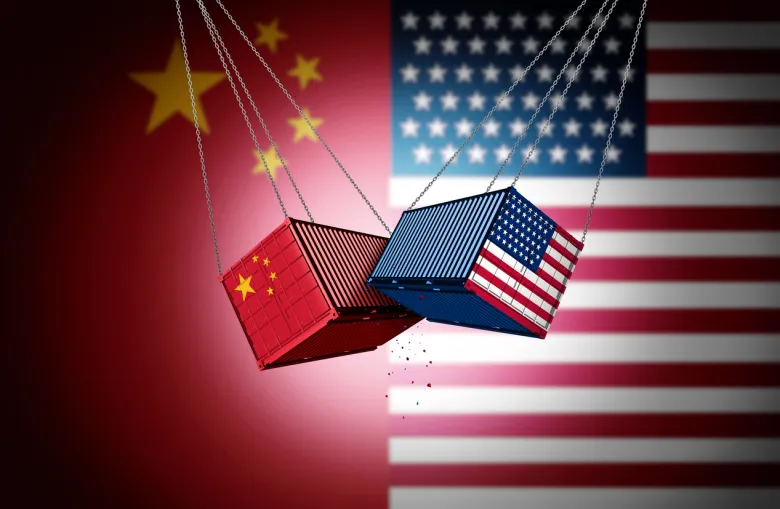The economic relationship between the United States of America and China is one of the hot topics in the world. Both countries have bought and sold goods from each other for years. However, things have changed a lot today. New taxes, called tariffs, have made trading more expensive. These changes have caused so many problems for farmers, workers, and businesses. Now in 2025, new tariffs, shifting policy positions, and fluctuating trade volumes are redefining the world’s most critical trade partnerships. People are worried about what will happen in this trade fight. In this post, you will walk through every crucial aspect of U.S.-China trade & tariffs.
Rising Deficits and Shifting Trade Volumes
The China and the U.S. trade imbalance remains substantial in 2025. As per the latest figures from the U.S Census Bureau, the United States of America recorded a goods trade deficit of $88 billion with China between January and April 2025. The U.S. exports to China totaled $40 billion, while imports increased to $128 billion during this period. You will be surprised to know that the United States exported $8.19 billion and imported $25.38 billion in April alone. This is causing a loss of $17.19 billion every month. Moreover, recent months have seen a notable decline in exports, driven by falling demand across sectors like agriculture and technology.
The “Liberation Day” Tariffs and Escalation
In April 2025, the U.S government started new rules called the “Liberation Day” tariffs. These rules added up to a 10% tax on almost everything America imports from other countries except Canada and Mexico. But China was hit much harder, with some taxes going more than 145%.
China didn’t stay quiet. It fought back by placing very high taxes of 147.6% on goods from America. This included products like soybeans, machines, and computer parts. These actions created the biggest trade fight between the two countries since the trade war that began in 2018.
Economic Costs and Tariff Revenues
While tariffs are politically popular in some circles and have generated revenue, they also come with potential economic costs. In April and May 2025, the American tariff revenues accelerated to $37.8 billion, with $22 billion collected in May alone. Well, this marked a 42% increase from the revenue created in April. These taxes made up about 6% of the money the government earned each month. On top of that, several economic studies have shown the broader costs;
- Experts at the Yale Budget Lab say the current tariffs could earn the government $3.1 trillion in 10 years. However, it may also cause $582 billion in lost business and jobs.
- The Federal Reserve Bank of Richmond noted that a 20% tariff makes every $1 of Chinese goods cost about 22 cents more. This can raise prices and hurt spending.
- The Tax Foundation estimates that the average American family might spend about $1,200 more each year. This is because of higher prices on everyday items and materials.
Impacts on Key Sectors and Supply Chains
The fallout from U.S-China trade & tariffs has been felt across many industries, including below;
Agriculture
Farmers in the Midwest have been hit hard by China’s high taxes on U.S farm goods. China added over 100% in extra costs on things like soybeans, pork, and corn. This caused sales to drop. Though government help has eased some pain, many smaller farms are still losing money.
Manufacturing
Factories in America are facing problems as well because it is now more expensive to bring in new parts and raw materials from other countries. This has made it challenging for industries, like car manufacturers, which depend on many different parts, to keep things running flawlessly.
Shipping and Logistics
The United States ports, especially on the West Coast, are getting less business due to tariffs. In May 2025, the Port of Los Angeles saw a 35% drop in goods from China. Fewer ships came only 5 a day instead of 12. In early June, shipments rose a little, but were still lower than last year.
Outlook and Future Scenarios
There are a couple of things that might occur in the future. The U.S and China could talk more and reach an agreement to reduce tariffs and collaborate in areas like climate change, computer chips, and critical minerals. They can also gradually cease to rely on one another on sensitive matters and export more to the neighboring nations. In case of escalation of issues, such as in the Taiwan Strait or the South China Sea, tariffs may increase once more, and additional sanctions may be imposed. The actions of both parties will totally determine the future.
Bottom Line
In 2025, the United States of America and China have a tense but careful trade relationship. Tariffs are still high, and trade is slower. Not only this, but businesses also face higher costs and supply problems. Still, recent talks show both sides want to avoid more trouble. No matter what choice both countries make, it will affect markets, industries, and people around the world.

